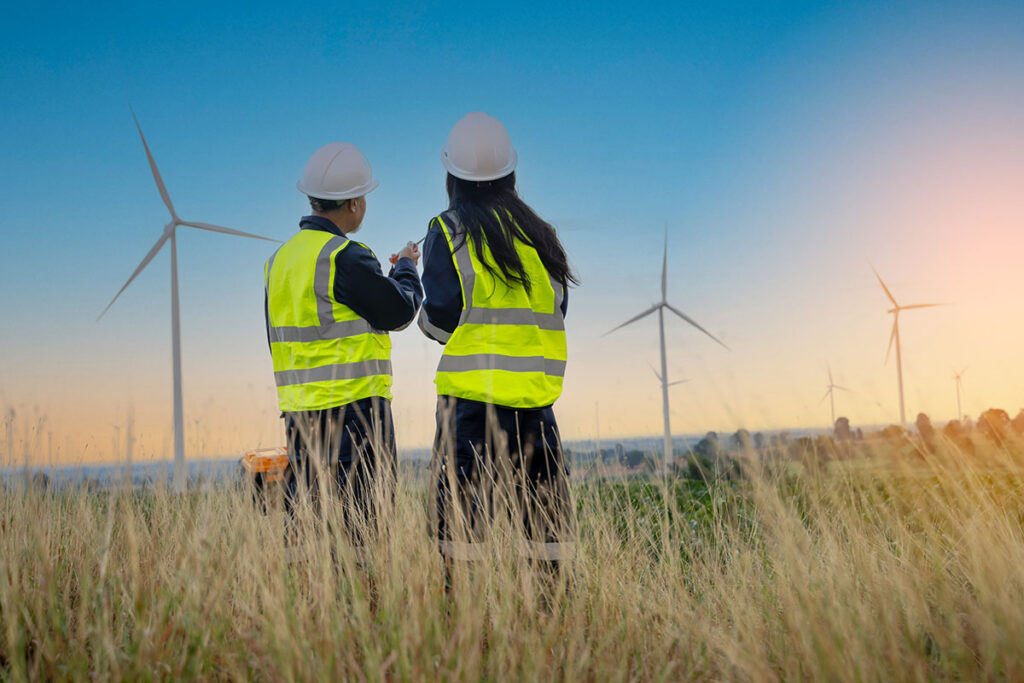Humans rely on electricity, but sometimes the power goes out. It seems that the power is going out more frequently in California in recent years. To explore this phenomenon, students begin by figuring out where electricity comes from and how it gets to our homes and schools. They then explore how extreme weather events, such as extreme storms and extreme heat, can lead to power outages. Students then investigate the effects of a warming climate on power outages. Finally, students determine how communities can take action to prepare for power outages and ensure fair decisions around energy resilience.
While investigating power outages, students will create initial models to show why power outages are more frequently occurring. Students investigate California’s power grid using hands-on materials and case studies. Students then determine how extreme weather can cause power outages, explore the effects of power outages on different communities, and identify ways to adapt and mitigate the outages. The unit culminates with the class developing a final explanatory model and developing an action plan addressing one or more aspects of power outages in California.

Principles 1-5
“For my students who may not engage with abstract concepts, the real-life relevance of turning waste into soil for growing plants offers a clear, meaningful goal that they can understand and feel proud to participate in.”
“The message that there are solutions to help us combat climate change and that people are working together to solve problems helped students stay in a place of curiosity; they didn’t show anxiety over the content.”
“There is something for all different kinds of learners. We are moving spaces, drawing, talking in big and small groups, writing. Some of my kiddos who would have been disengaged quite possibly the entire time were engaged in at least two or more parts of this lesson.”
“My students often refer to the experience and knowledge gained. I plan to use Seeds to Solutions lessons in the future.”
“I love how the data was more interactive and chunked into smaller pieces. I also like how there was a way to bring all the knowledge and wondering back to come up with a conclusion to the problem.”
“I have learned ways to improve my teaching, and I have been at this for 38 years. The students are gaining a deeper understanding of what climate change is: what causes climate change, and the impact of climate change on crop yield.”
“This is engaging because it uses real data about the state students live in and shows changes within their lifetime, like the rise of warehouses and trucking during the pandemic.”
“What I find interesting is that students are discussing the material outside of class time. I heard students discussing the ideas before class in the hallways and even during lunch periods.”
“Using the maps and seeing things like schools and how close they are to hazards is really cool. They may not be super connected personally, but they can put themselves in the shoes of other kids and try to relate. I know it’s working because I have a kid that just watches Netflix all day, every day and he pulled out his earbud and participated!”
“They’ve never thought about stuff like this before, and now they’re sharing it. One girl said this was the only class that she went home and talked to her parents about.”
“I am so amazed and impressed by the depth of resources that you embedded in the teacher guide. This is really well put together.”
“Every lesson was so thoroughly designed, the case study design book was beautifully organized, and it helped to give my class a real-life understanding of how college/graduate-level academic research works. Being able to connect their research back to environmental issues they actually experience was simply icing on the cake. Well done!”

Teresa Barnett, Community Resources for Science
Sagit Betser, Community Resources for Science
Tyler Chuck, Community Resources for Science
Helen Fitzmaurice, UC Berkeley, OTACA
Kelsie Fowler, University of Washington
Kate Gallagher, Oakland Teachers Advancing Climate Action
Eric Havel, Community Resources for Science
Carrie Peters, Elementary Curriculum Consultant
Adriana Threlkeld, Community Resources for Science
Community Resources for Science Advisory Council Members
Leena Bakshi-McClean, STEM4Real
Matthew D’Alessio, California State University, Northridge
Kathy DiRanna, K-12 Alliance, WestEd (retired)
Jill Grace, K-12 Alliance, WestEd
Guy Ollison, BSCS
Janel Ortiz, Cal Poly Pomona
Joanna Totino, Bay Area Science Project
Spencer Alliston, UC Berkeley
Naomi Asimow, UC Berkeley
Trelasa Baratta, Redbud Resource Group
Melissa Campanella, Ten Strands/CCEJP
Alexis Castañeda, San Francisco Unified School District
Kathy DiRanna, Ten Strands/CCEJP
Matt Ellinger, Designer
Myra Fisun, Albany High School/UC Berkeley
Tarini Hardikar, UC Berkeley
Stacey Lane, Illustrator
Sharon Marcos, Sogorea-Te’ Land Trust
Betsy Mitchell, UC Berkeley
Josh Paschedag, Development Editor
Jade Patterson, Bloomberg
Emily Reigh, UC Santa Cruz
Claudio Vargas, Sci-Lingual Education
Margaux Winter, UC Berkeley
Michele Bauer, Hayward USD
Rebecca Bear, Hayward USD
Eva Beleche, Oakland USD
James Brandle, Hayward USD
Jamila Edwards, Oakland USD
Cherene Fillingim-Selk, Berkeley USD
Hamilton Gernon-Wyatt, Los Angeles USD
Kelly Gresalfi, PS1 Pluralistic School
Amy Lindahl, Hayward USD
Jackie Osmania, Berkeley USD
Charlene Pugh, Hayward USD
Valerie Refrea, San Leandro USD
Atria Rondone, San Francisco USD
Shawna Suzuki, Berkeley USD
Liliana Vargas, Los Angeles USD
Jodie West, Pasadena USD